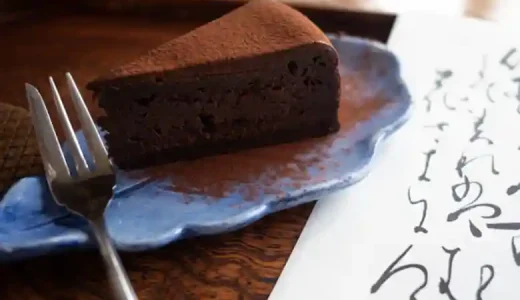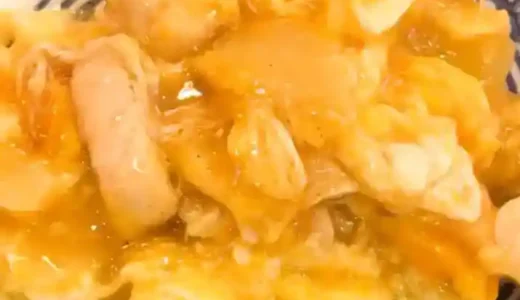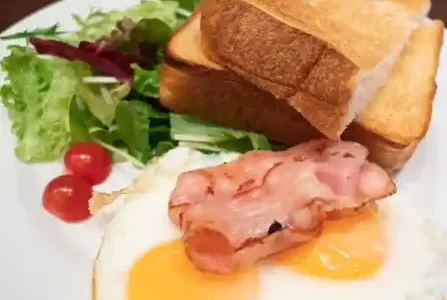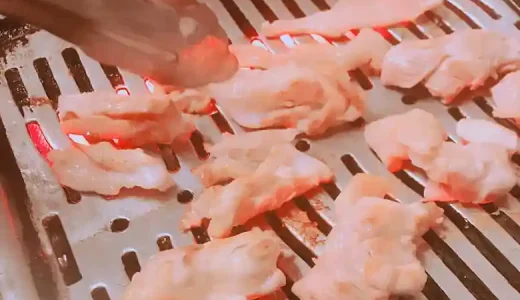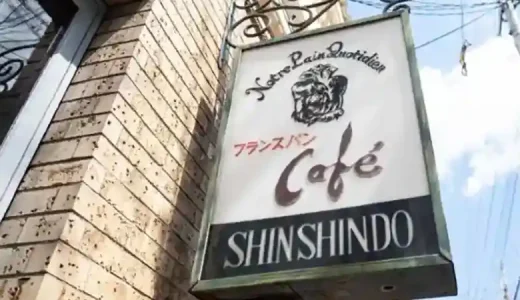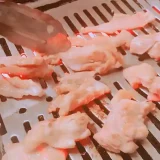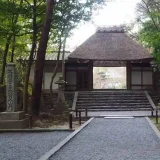We visited Café Shinkoka in Kyoto, the setting for Japanese novels and anime. This novel describes the solving of a murder case at the Yoshida-Sanso.
Café Shinkoka is a small Western-style house but without the Western gleam. It is a rustic wooden building, seemingly tucked away in the woods.
Mai Mochizuki, “Mysterious Tea Party: Holmes of Kyoto: Volume 4,” Futaba Bunko, 2016, p. 97
I loved this novel, and I dreamed of visiting café Shinkoka. This trip to Kyoto allowed me to fulfill my dream of visiting Café Shinkokan.
Yoshida Sanso
Mt. Yoshida is located between the Higashiyama mountain range and the Kamo River. Yoshida-Sanso stands at the foot of the eastern side of Mt. Yoshida.
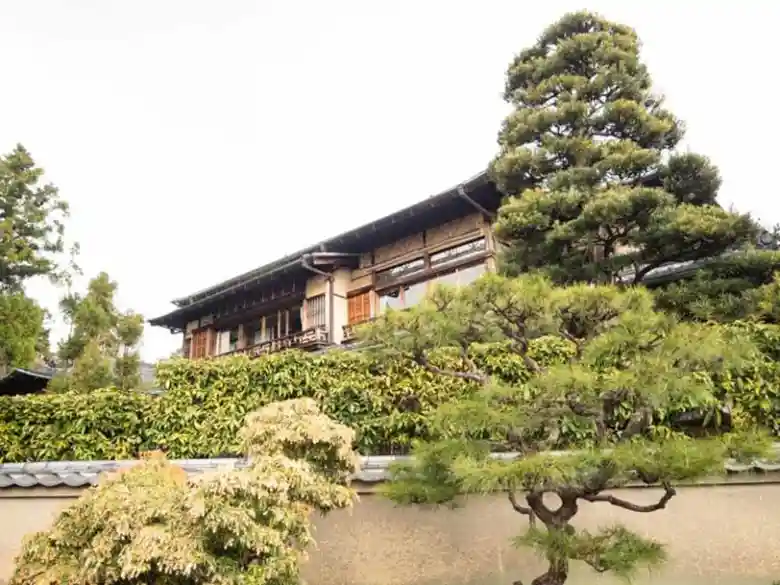
Yoshida Sanso was built in 1932 as the second home of the Higashi-Fushimi family. King Kunihide Higashi-Fushimi, the brother-in-law of Emperor Showa, attended Kyoto University from this residence. In 1947, after World War II, the Higashifushimi family withdrew from the imperial family by order of GHQ. Therefore, this residence became a ryokan (Japanese-style inn) in 1948. The home and garden remain as they were at that time. This residence has been certified as a registered tangible cultural property of Japan.
Karamon gate
The entrance was an imposing Karamon gate.
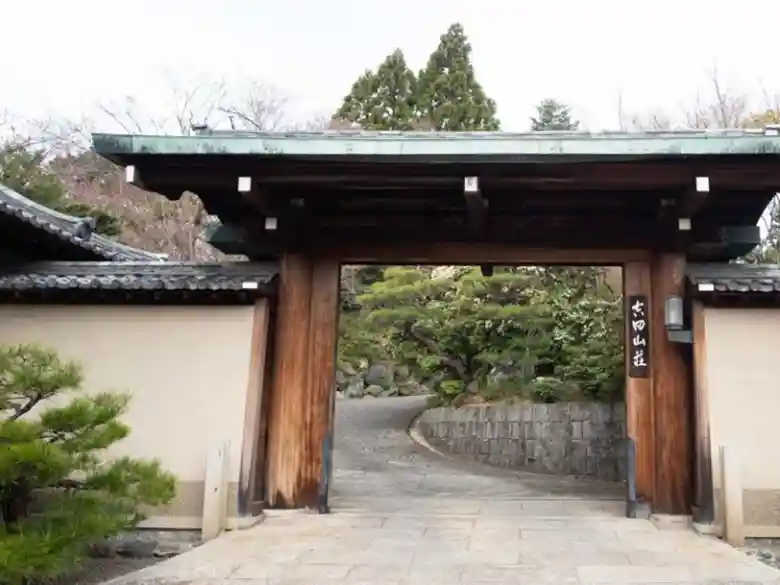
Nishioka Tsunekazu, a master carpenter and a person of cultural merit, built this gate. He was the exclusive palace carpenter of Horyuji Temple and passed down to future generations the techniques of temple construction inherited from the Asuka period (710-794).
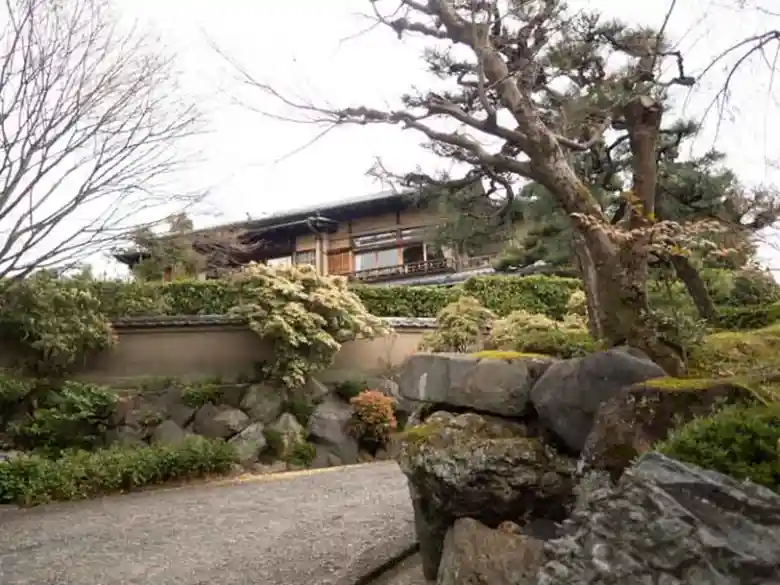
After passing through the gate, a slope continued uphill.
Japanese-style house
An elegant Japanese-style house appeared on the left side of the slope.
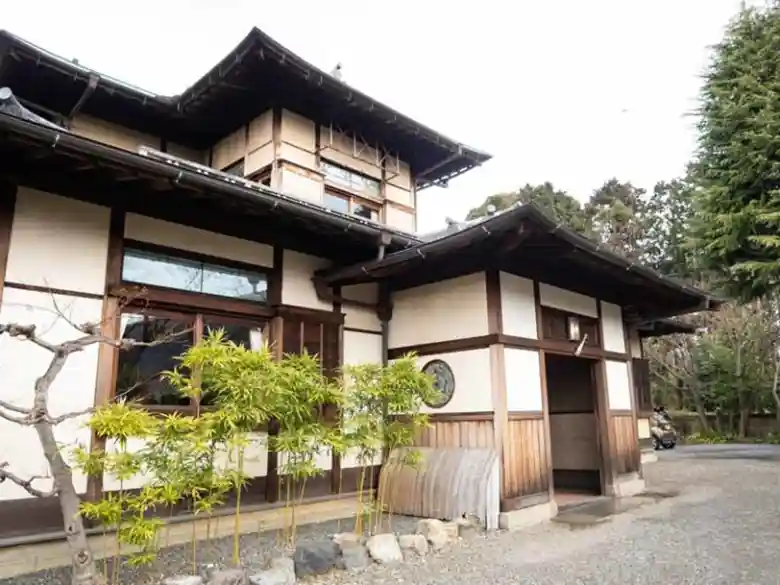
The building was constructed entirely of cypress. The roof tiles were decorated with the “chrysanthemum crest” associated with the imperial family. The round stained glass pattern on the left side of the entrance, shown in the photo, was based on the pattern on the back of a copper mirror excavated from an ancient burial mound.
Café Shinkokan
After passing a Japanese-style house and climbing a hill, I found a hut-like building. This was Café Shinkokan.
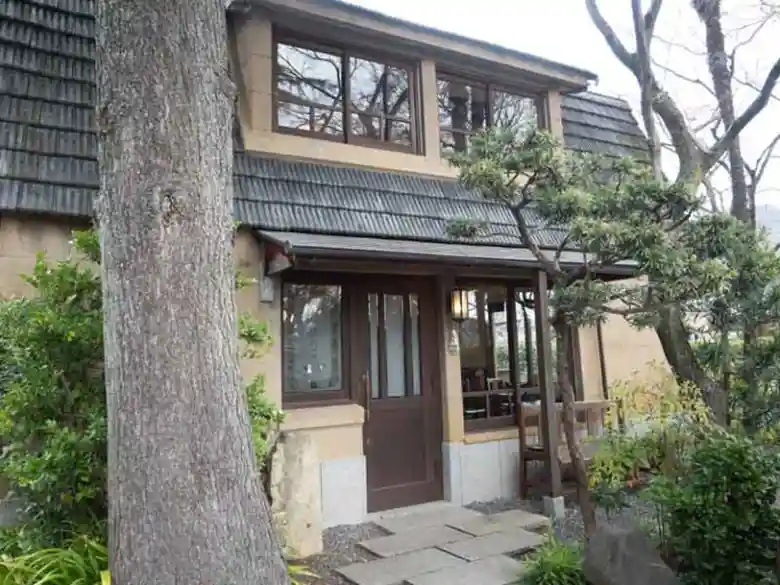
This house was used as a garage during the Higashifushimi Palace period.
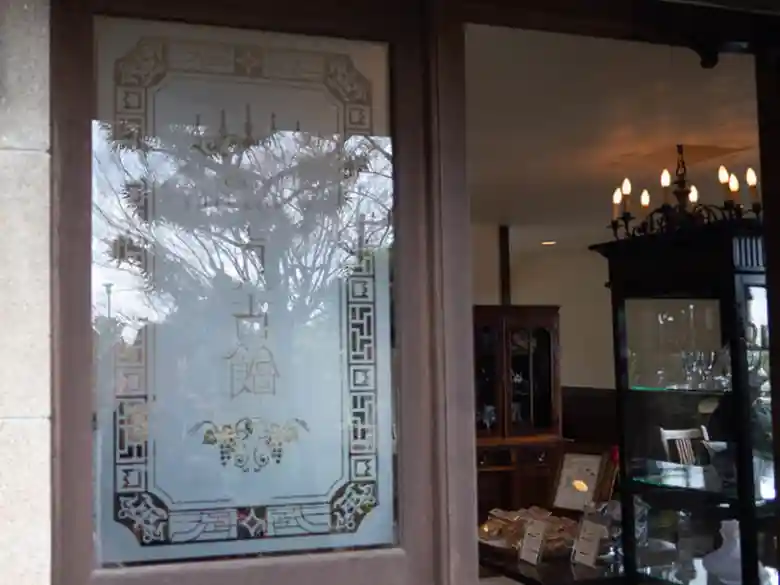
The entrance had a frosted glass door with “真古館(Shinkokan)” painted in Japanese.
Holmes of Kyoto
A novel titled “Mysterious Tea Party: Holmes of Kyoto” was introduced inside the cafe. This novel is set in Café Shinkokan.
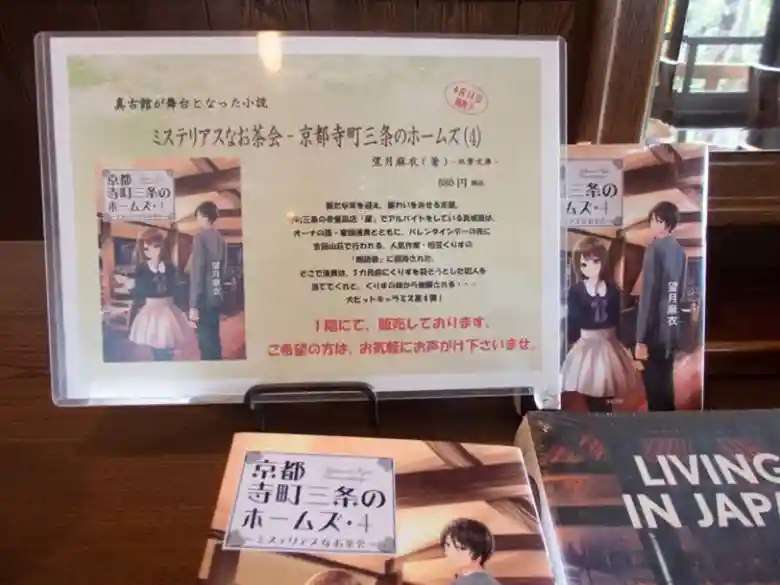
The main character, Kiyotaka Yagashira, nicknamed the “Holmes of Kyoto,” loves cafes and is very knowledgeable about restaurants in Kyoto. He admits that Café Shinkokan is “one of the top five cafes in Kyoto.
It’s a lovely little Western-style house that looks like a hideout, maintaining the exterior built as a residence of a palace family. It is one of my top five recommended cafes.
Mai Mochizuki, “Mysterious Tea Party: Holmes of Kyoto: Volume 4,” Futaba Bunko, 2016, p. 93.
Inside the cafe
When I entered the cafe, there was a wooden staircase on the left. The cafe space was on the second floor.
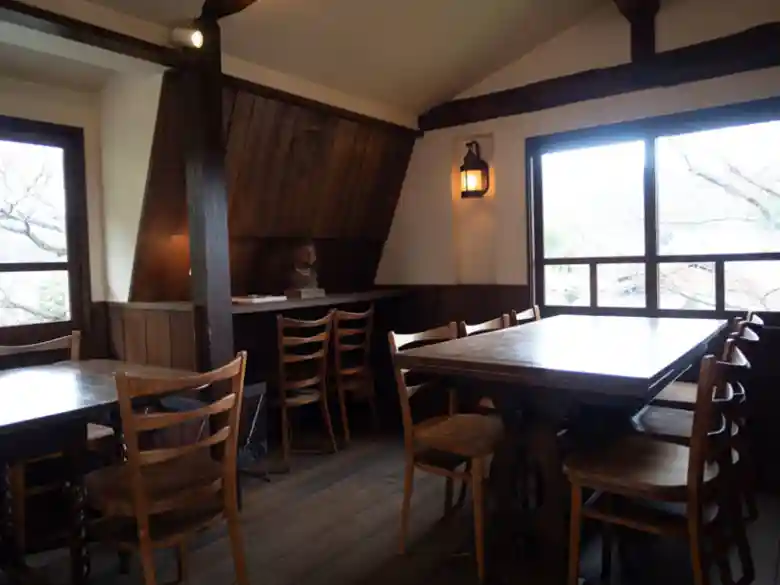
I went up the stairs to a room on the second floor. There were no other customers. The wooden floor was shiny black, and antique wooden tables lined the floor. The interior, lit by lamps, was dimly lit, creating a fantastic atmosphere.
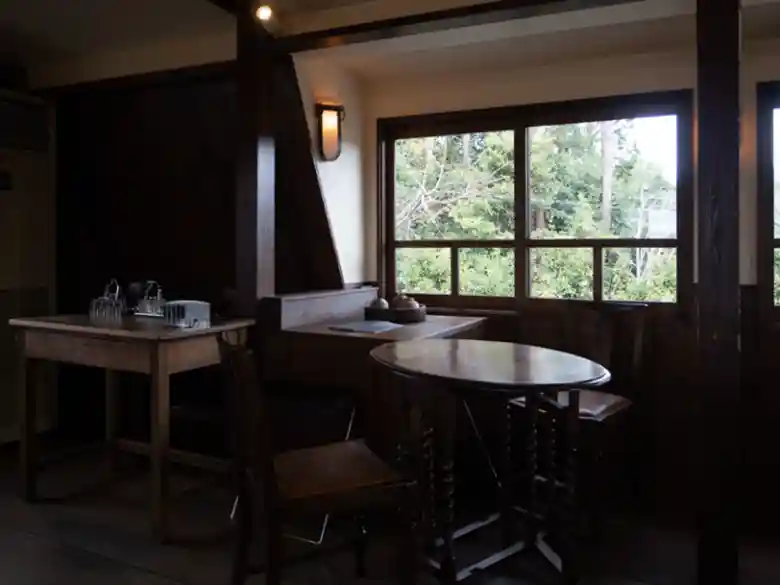
There were large windows on three sides of the room. From the window on the east side, I could see the character “大” (large) on Nyoigatake (Mt. Nyoigatake). This “大” is the part that is lit during the Gozan Okuribi (Bonfire on Five Mountains).
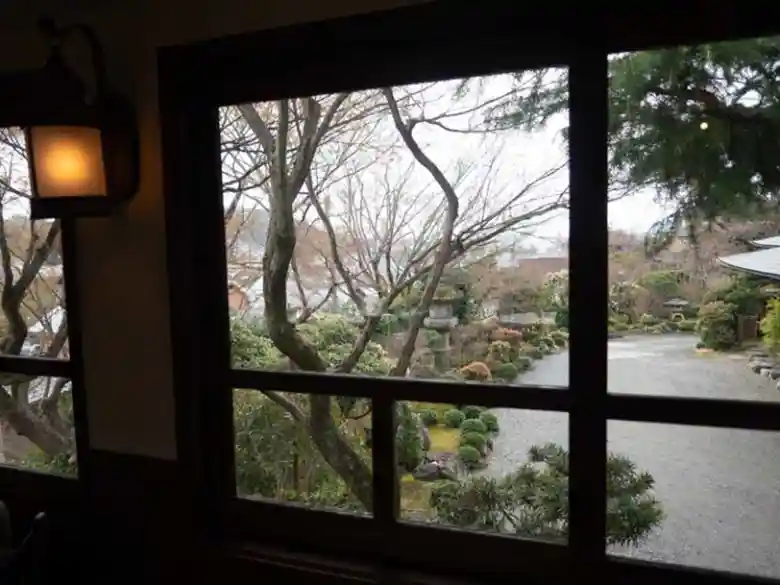
From the north window, I could see Mt. Hiei, and from the south window, I could see the view of the city of Kyoto. Suddenly, a waiter appeared from the employee-only staircase. The stairway was in a hidden place.
Café Shinkokan’s trademark
The bat is the trademark of Café Shinkokan.
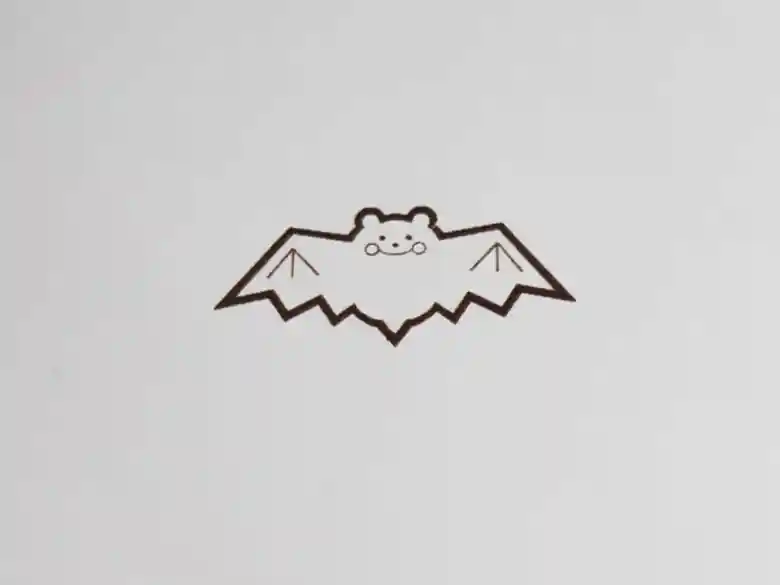
The character “bat” has the same sound as the Chinese word “hefuku(変福),” which means “to be blessed. For this reason, the bat was a lucky charm in ancient China to bring good fortune.
Chocolate Cake
I ordered the chocolate cake set. It was a healthy cake made of cacao mass and tofu.
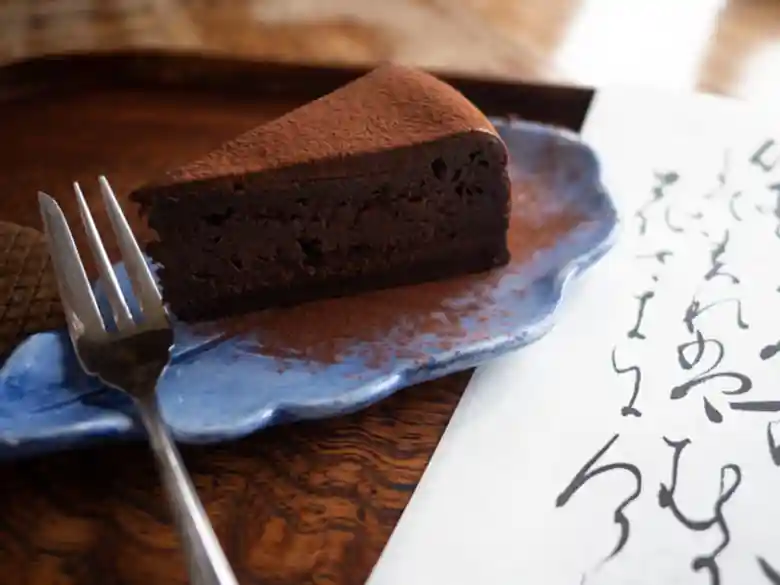
It had a bittersweet bitter taste.
Coffee and Bat biscuit
A Bat biscuit accompanied the coffee. This biscuit was crispy and had a cinnamon flavor.
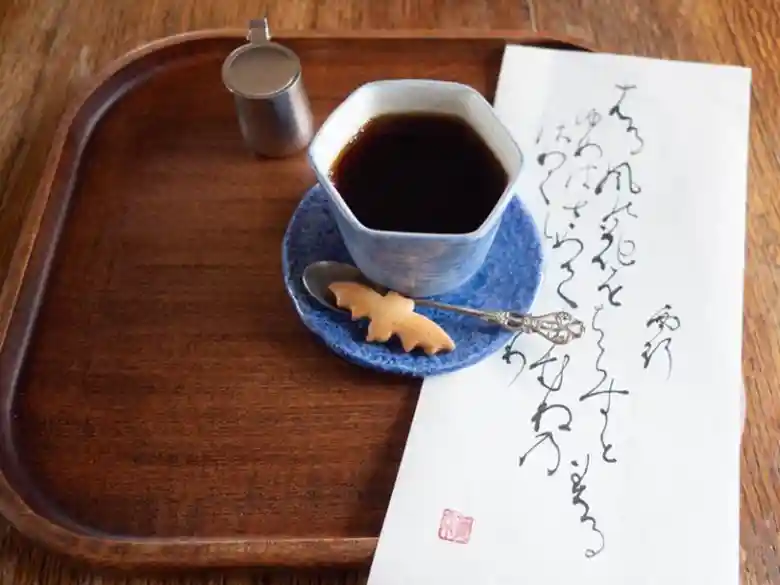
A strip of Japanese poetry accompanied the coffee. The proprietress of Yoshida Sanso wrote this poem in ink using a brush.
Looking around, it seems that willows and cherry blossoms have been picked and mixed into a beautiful pattern. Yes, this view of the capital is the brocade of spring.
Sosei Houshi “Kokin Waka Shu,” No.56
This poem is about spring in Kyoto from the Kokin Waka Shu. The Kokin Waka Shu is an anthology of waka poems published around 905. The Emperor of Japan ordered the collection to be compiled by selecting waka poems from ancient times.
I had a quiet and serene time. If you come to Kyoto, please visit Café Shinkokan.
